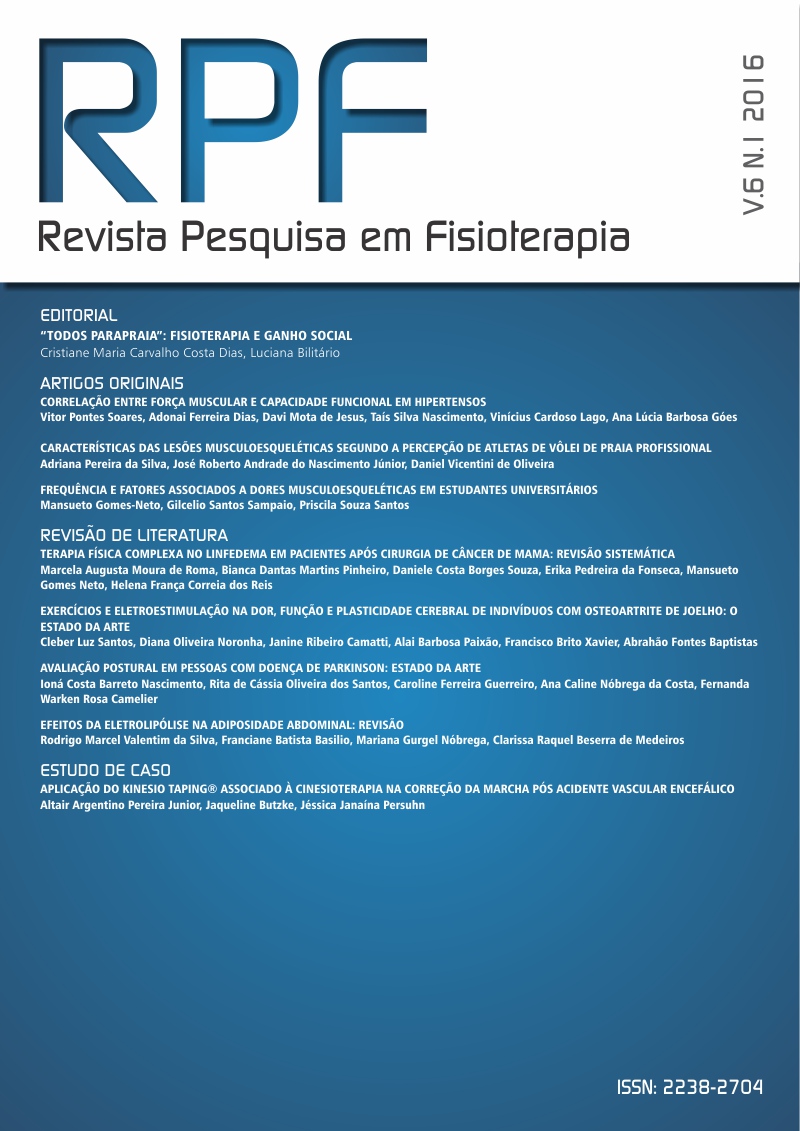EXERCISES AND ELECTROSTIMULATION IN PAIN, FUNCTION AND CEREBRAL PLASTICITY OF INDIVIDUALS WITH KNEE OSTEOARTHRITIS: THE STATE OF THE ART
DOI:
https://doi.org/10.17267/2238-2704rpf.v6i1.783Keywords:
Osteoarthritis, Exercise therapy, Electrical stimulation therapy, Neuronal plasticity, Chronic painAbstract
Objective: This review provides evidences about exercise and exercise combined with electrical stimulation in subjects with knee OA. Methods: A narrative review was performed concerning conservative nonpharmacological strategies, particularly exercise, transcranial direct current stimulation (tDCS) and neuromuscular electrical stimulations (NES). The variables analyzed were pain, function, quality of life and cortical excitability. Results: The results have shown what exercises are beneficial for improving pain and function in people with knee OA. Exercise associated the tDCS can improve the benefits from therapeutics. The evidence in OA are rare, however promising. Similar findings were found with NES. Studies suggest what the combination is better than isolated exercise. Conclusions: Electrical stimuli can be involved in the exercise resulting in improved effects. This is due to improved brain plasticity that occurs differently in the two techniques. The effects of the interaction between voluntary stimuli (exercise) and exogenous stimuli (electric) in brain plasticity in the subjects with knee OA require detailing. Information about intensity, frequency and duration of intervention programs are divergent. Systematic reviews with meta-analyses should be developed to identify the most effective combination in pain, function and quality of life to these subjects.



